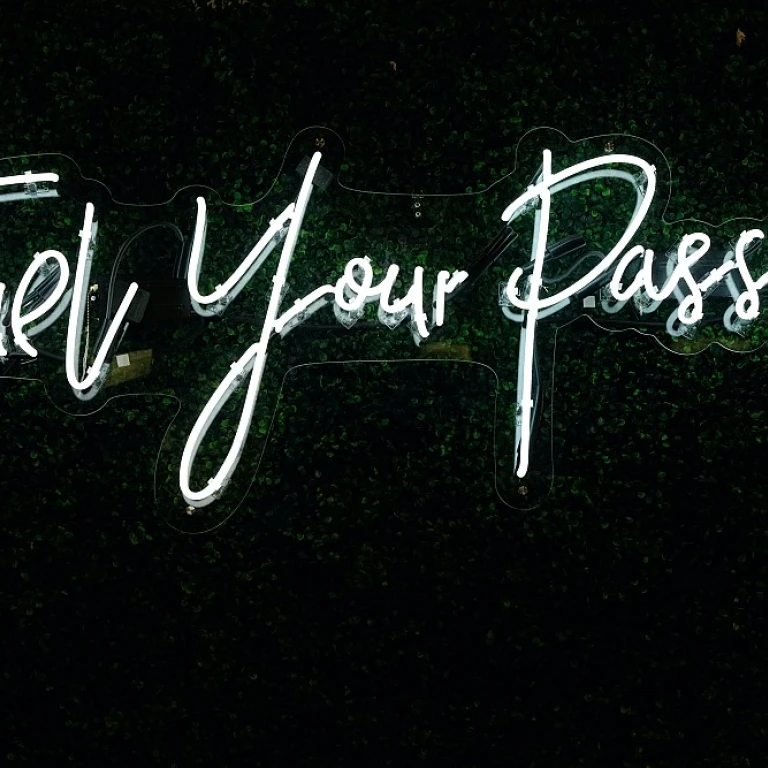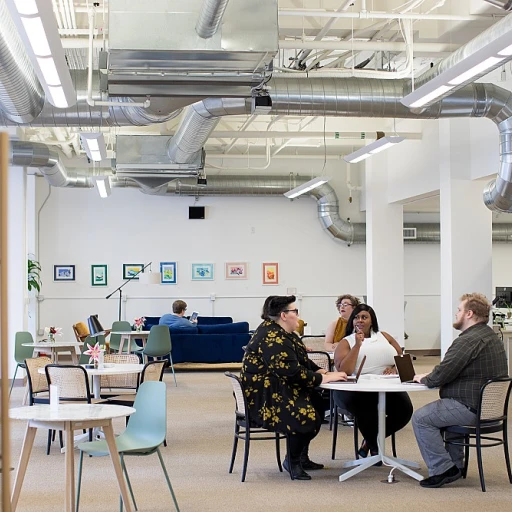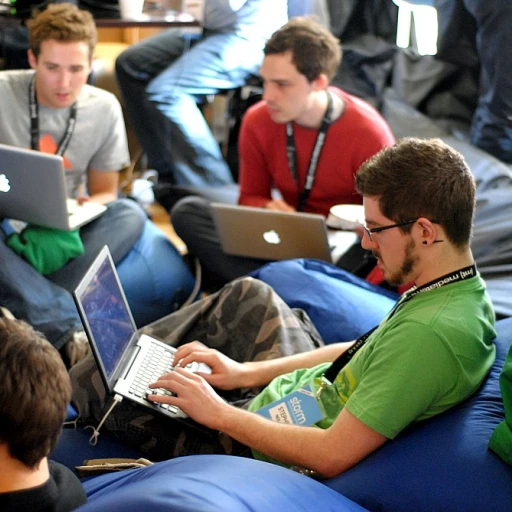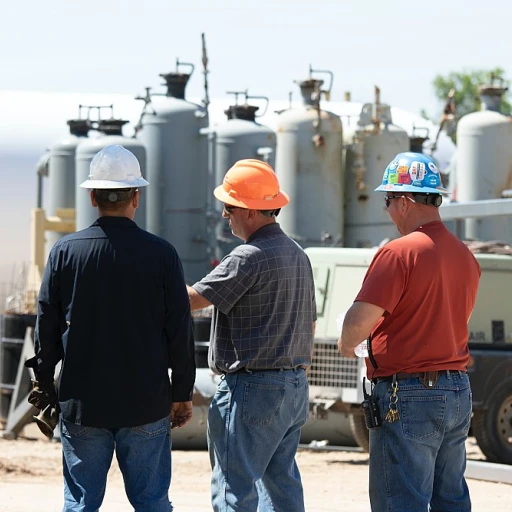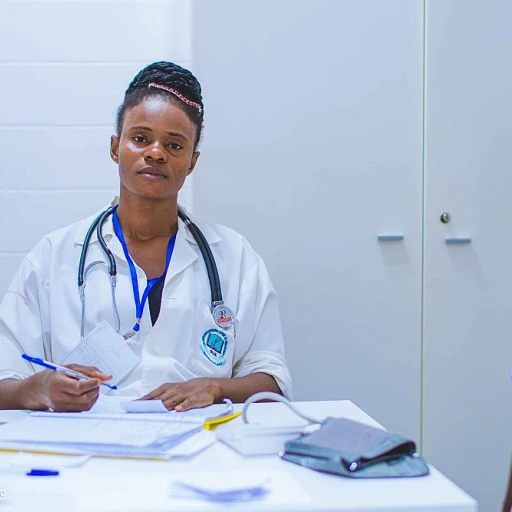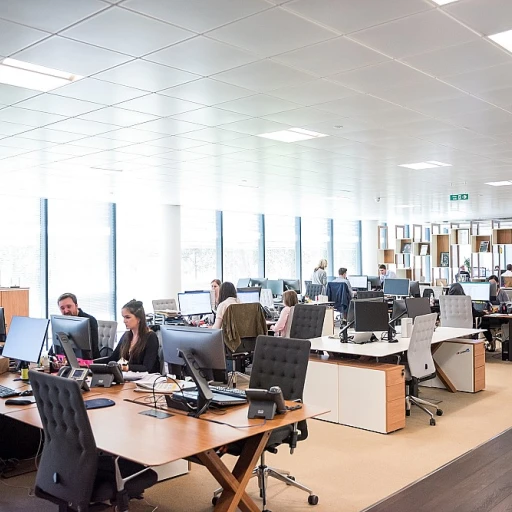
Understanding the Role of Human Resources in Innovation
The Crucial Role of HR in Driving Innovation
In today’s fast-paced business environment, human resources play a vital role in fostering innovation within organizations. A significant part of this involves creating a workplace experience that encourages creativity. HR departments are not just about hiring and firing anymore; they are instrumental in shaping an office culture that values and promotes creative thinking.
HR teams need to design and support a workspace that inspires and challenges employees to think outside the box. Whether it’s through enabling flexible work policies or creating office spaces with ample natural light and modern aesthetics, the goal is to make the office a place where ideas flourish.
Moreover, the physical space itself holds potential to spark innovation. Workspaces with tall ceilings, coworking areas, and studio spaces with abundant art supplies can provide employees the physical space required for experimental and creative work. Even simple design changes, like allowing for adjustable desks, can help maintain comfort and productivity.
HR’s facilitation also extends beyond physical spaces. Providing time for employees to brainstorm, think, and create without the pressure of immediate deadlines can be crucial. Encouraging cross-departmental collaboration could see ideas from different fields merging to create innovative products or solutions.
Human resources thus act as the backbone of any company’s innovation strategy, ensuring the environment—whether through workspace design or the implementation of supportive policies—is conducive to exploring new concepts and ideas.
Designing a Workspace That Inspires Creativity
Crafting a Dynamic Office Environment
Designing a workspace that inspires creativity involves more than just arranging desks and chairs. When thinking about cultivating a creative workspace, it’s imperative to consider an office design that integrates elements fostering imaginative thinking. Incorporating various creative spaces and coworking spaces within the office can significantly boost employees' creative output. The inclusion of art studios or studio spaces stocked with art supplies can be particularly effective for individuals engaged in creative work. Tall ceilings, ample natural light, and strategically placed items can help create a soothing yet stimulating environment, ideal for brainstorming sessions and nurturing new ideas.- Flexible Work Areas: Create spaces where employees have the freedom to move around, whether it involves telephone internet connectivity for seamless communication or prewired cables for convenience.
- Inspiration-Infused Zones: Designate areas that serve as an inspiration hub, offering a collection of intriguing objects and designs that spark creative thinking.
- Personalized Work Stations: Allow team members to personalize their desks with items that promote comfort and creativity, like plants or artistic pieces.
Implementing Flexible Work Policies
Flexibility as a Key Driver for Creative Outcomes
Establishing flexible work policies is pivotal in cultivating an environment where creativity can flourish. Allowing employees to adapt their schedules can lead to more innovative and effective work. When people have control over their time, they can find periods when they're most creative and optimize their workflow accordingly. One practical approach is implementing flexible demarcations for when and where work occurs. This could mean permitting work-from-home days or providing access to coworking spaces that better align with an employee's creative rhythm. Such environments can be enriching, offering a blend of solitude and community engagement which can stimulate new ideas.- Workplace Freedom: A key benefit of flexible work environments is that they enable individuals to tailor their environments to enhance their creative processes. Having the autonomy to choose a creative workspace, whether it's an art studio laden with natural light or an open office space with tall ceilings and a view, aids in mental expansion.
- Designated Creative Zones: Employers can foster a culture of creativity by allocating certain areas as 'creative work' zones. Equipping these spaces with art supplies or comfortable furnishings can spark imaginative thinking. Additionally, providing the necessary infrastructure such as telephone internet and prewired cable will ensure seamless communication, whether through an internet call or other means.
Encouraging Cross-Departmental Collaboration
Breaking Down Silos for Enhanced Innovation
In today's fast-paced business environment, fostering creativity is essential, and one of the most effective ways to do so is by encouraging cross-departmental collaboration. By breaking down silos, organizations can create a dynamic workspace where ideas flow freely across different teams and departments. This not only enhances innovation but also helps in building a more cohesive work environment.
Creating a collaborative office space involves designing areas that promote interaction and communication. Consider implementing open spaces or coworking spaces where employees from various departments can come together to brainstorm and share ideas. These creative spaces should be equipped with flexible seating arrangements, tall ceilings, and ample natural light to inspire creativity and collaboration.
Another key aspect is the integration of technology. Equipping these spaces with prewired cable for internet and telephone connections ensures seamless communication. Whether it's an internet call or a telephone internet setup, having the right technology in place will help facilitate better communication among teams.
Additionally, incorporating elements like art supplies and a creative studio space can further inspire employees to think outside the box. Providing a dedicated art studio or a creative workspace stocked with necessary items can encourage employees to engage in creative work and generate innovative ideas.
To keep the momentum going, it's crucial to allocate time for regular cross-departmental meetings or workshops. These sessions can serve as a platform for employees to share their insights and collaborate on projects, ultimately leading to more innovative solutions.
By fostering an environment that encourages cross-departmental collaboration, organizations can unlock the full potential of their workforce, driving innovation and creativity to new heights.
Training and Development for Creative Thinking
Enhancing Creative Skills
In today's rapidly evolving work environments, fostering an atmosphere that nurtures creative thinking is essential. Training and development programs aimed at enhancing creativity can be an invaluable asset. A well-rounded approach includes focusing on the design of office space and refining processes that invigorate innovation.
To cultivate a creative workspace, consider these strategies:
- Interactive Workshops: Organize workshops that encourage team members to venture beyond their comfort zones to generate fresh ideas. This hands-on approach, whether in a modern office, a studio space, or a coworking space, can rekindle creativity.
- Designated Creative Spaces: Set aside specific areas for brainstorming. These creative spaces can double as art studios stocked with art supplies and amenities like tall ceilings or natural light to inspire ingenuity.
- Artistic Activities: Integrate artistic tasks into the workflow. Encouraging employees to engage with activities typically reserved for an art studio can stimulate the imagination and facilitate unique perspectives.
- Technology Integration: Provide tools and technology, such as internet call services and prewired cable setups, to support creative work. The seamless integration of technology into the office space ensures efficient and inspired workflow.
- Reflection Time: Incorporate "thinking time" into schedules. Allowing ample time for ideation between tasks helps keep the workspace creative and ideas flowing.
Collaboration between departments is another avenue to bolster creative thinking. As highlighted elsewhere in this article, fostering cross-departmental interaction allows individuals to draw from a wider pool of ideas, enhancing the overall creativity of the organization.
In order to keep innovation alive, it is crucial that any creative initiative is supported with the right training and tools. Continuously assessing the impact of these efforts is essential for overall development.
Measuring the Impact of Creative Initiatives
Evaluating Creative Efforts in the Workplace
The process of measuring the impact of creative initiatives is essential for reinforcing a workplace culture that values and fosters creativity. This involves examining both qualitative and quantitative metrics to understand the influence of creative work on overall business objectives. Here are some strategies to effectively evaluate creative efforts in your workspace:
- Define Clear Objectives: Start by setting specific goals for your creative initiatives. Whether you aim to enhance employee engagement, increase productivity, or improve innovation metrics, having a clear focus will guide your evaluation.
- Track Progress Over Time: Use time-bound benchmarks to assess the impact of creative projects. Regular check-ins will help in determining whether workspace changes—like incorporating natural light, adjusting office space design, or introducing art supplies—are yielding the desired outcomes.
- Analyze Employee Feedback: Collect feedback from employees to gain insights into how creative spaces and work policies affect their work. Tools like surveys or internet call discussions can provide valuable input on workspace improvements.
- Measure Output and Collaboration: Evaluate the tangible results of creativity, such as new ideas generated, projects completed, or increased collaboration across departments. Consider how flexible workspace designs or coworking spaces facilitate these outcomes.
- Assess Creativity Training Impact: Determine the effectiveness of training programs aimed at boosting creative thinking. Monitor changes in creative output post-training, and gather data on whether these initiatives help employees thrive creatively at their desks or in studio spaces.
- Utilize Technology for Data Collection: Leverage technology, such as prewired cable systems and telephone internet, to efficiently gather data and assess the creative work environment. Having a streamlined system will make it easier to accumulate and analyze information.
- Environment and Workspace Changes: Investigate how changes in the physical space—such as tall ceilings and art studio areas—impact creativity. Ensure that these modifications lead to an inspiring atmosphere conducive to creative work.
By closely monitoring creative initiatives, evaluating their impact, and making necessary adjustments, organizations can create a sustainable environment that both encourages creativity and drives measurable results. Keeping a close eye on these metrics allows a company to continually refine its approach, ensuring a dynamic and responsive creative workspace.
